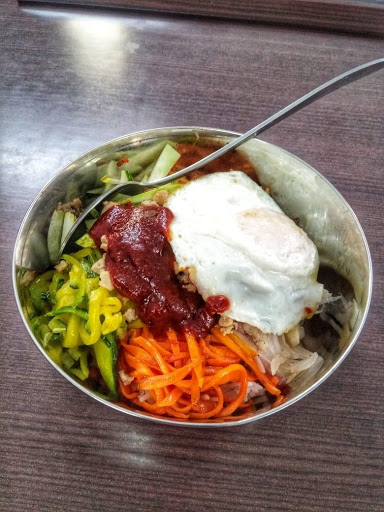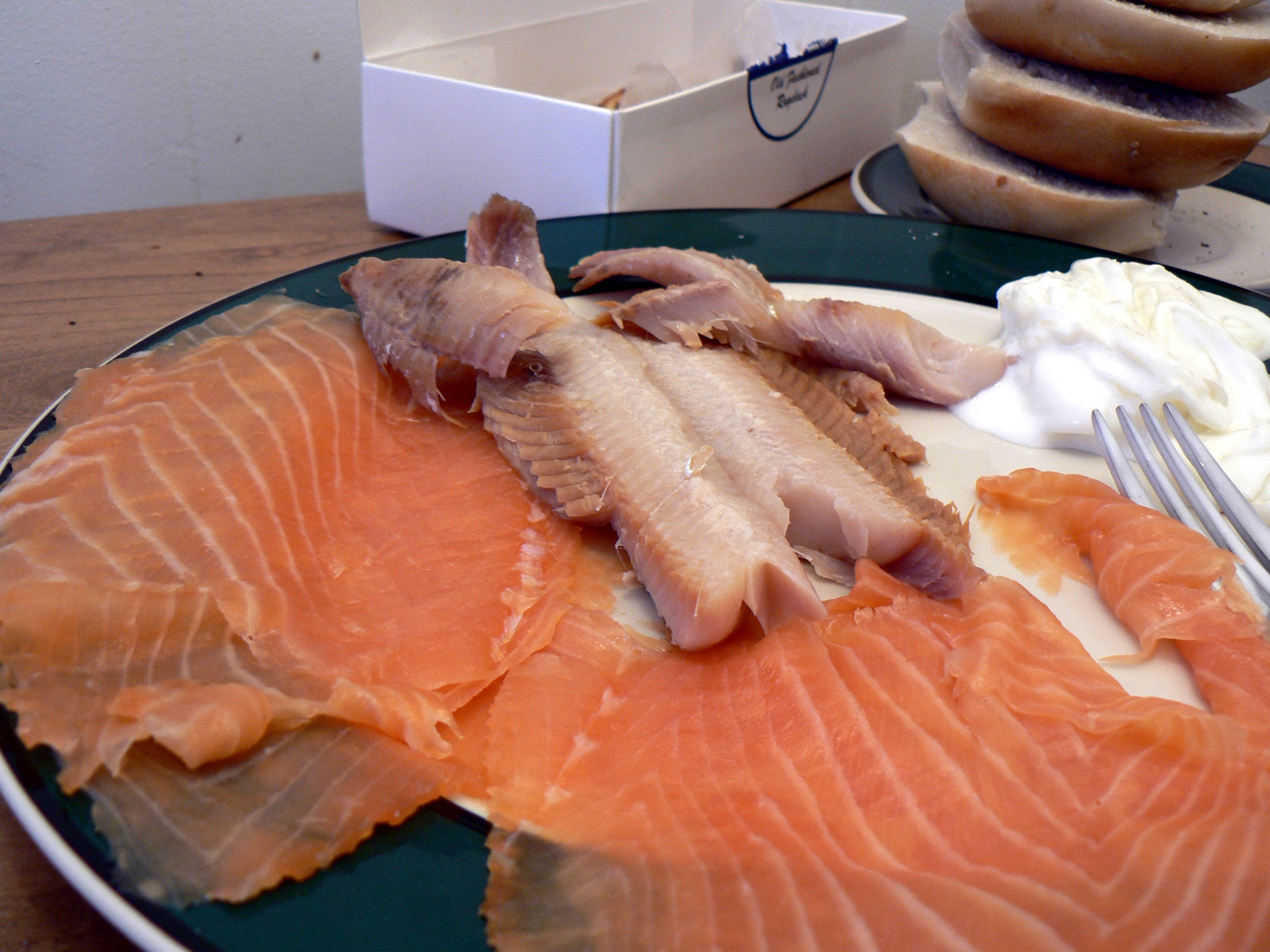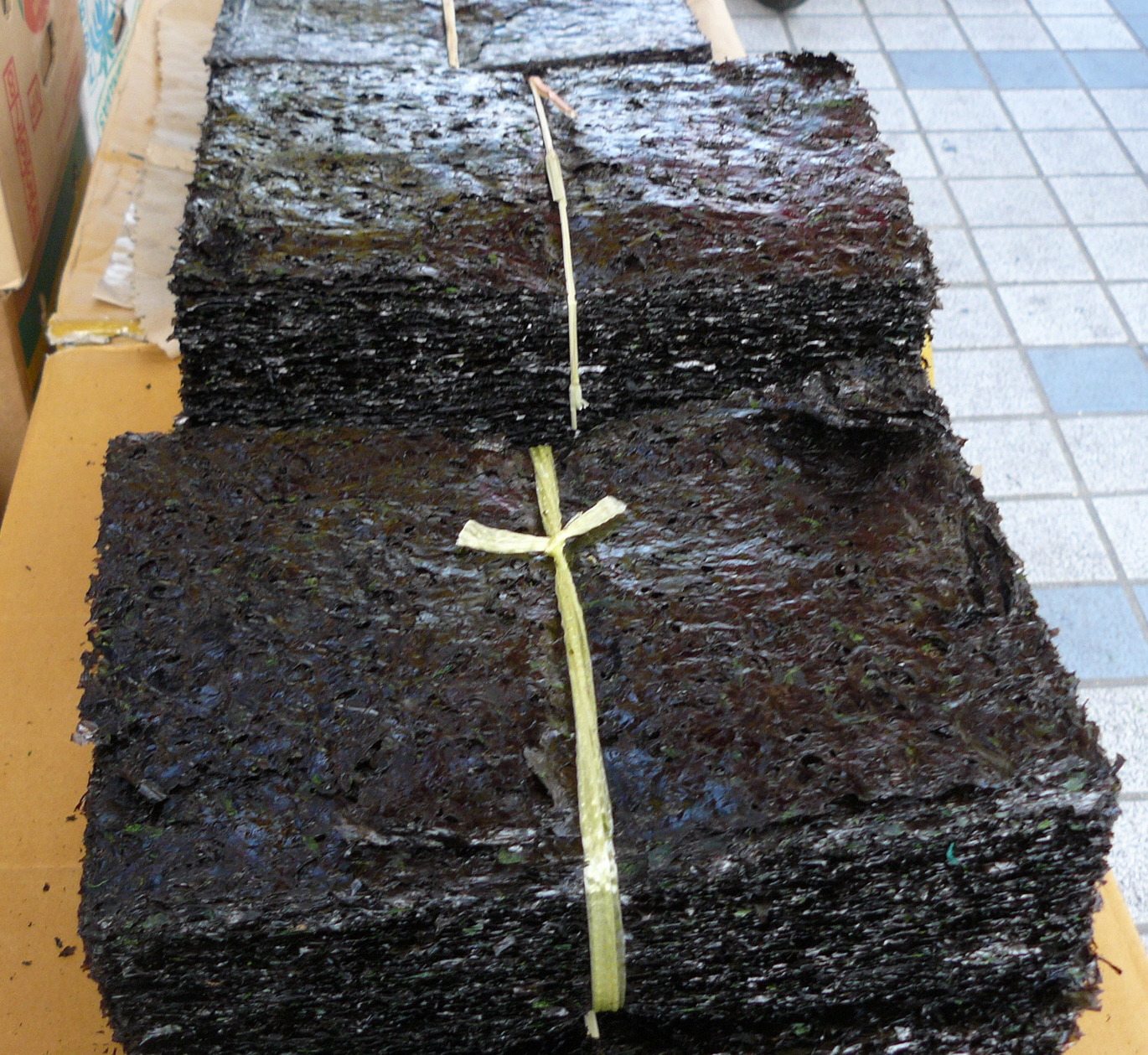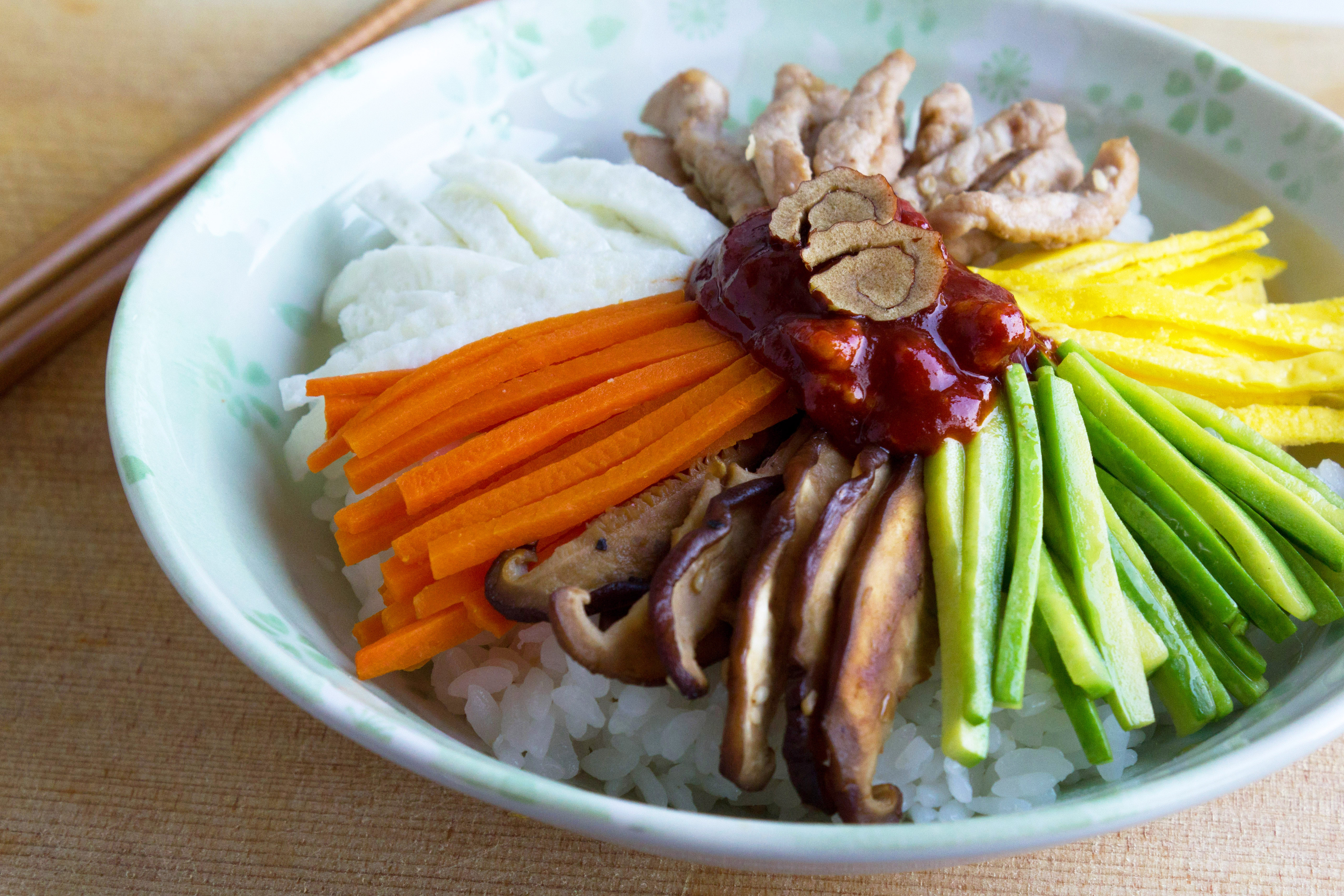|
Hoe-deopbap
''Hoe-deopbap'' * () or raw fish bibimbap is a Korean dish consisting of steamed rice mixed with sliced or cubed '' saengseon hoe'' (raw fish), various vegetables such as lettuce, cucumber and sesame leaves, sesame oil, and '' chogochujang'' (a sauce made from vinegar, ''gochujang'', and sugar). The fish used for making ''hoedeopbap'' is generally either halibut, sea bass, rockfish, tuna, salmon, or whitefish. The manner of eating ''hoedeopbap'' is almost the same as that used to eat ''bibimbap'': using a spoon, all the ingredients are mixed by the diner at the table before eating. There are different varieties named according to their ingredients, such as ''gul hoedeopbap'' () made from raw oysters and ''gajami hoedeopbap'' () made from raw sole, a specialty dish from Gangneung and its neighboring regions. [...More Info...] [...Related Items...] OR: [Wikipedia] [Google] [Baidu] |
Steamed Rice
Cooked rice refers to rice that has been cooked either by steaming or boiling. The terms steamed rice or boiled rice are also commonly used. Any variant of Asian rice (both indica and japonica varieties), African rice or wild rice, glutinous or non-glutinous, long-, medium-, or short-grain, of any colour, can be used. Rice for cooking can be whole-grain or milled. Cooked rice is used as a base for various fried rice dishes (e.g. chǎofàn, khao phat), rice bowls/plates (e.g. bibimbap, chazuke, curry rice, dal bhat, donburi, loco moco, panta bhat, rice and beans, rice and gravy), rice porridges (e.g. congee, juk), rice balls/rolls (e.g. gimbap, onigiri, sushi, zongzi), as well as rice cakes and desserts (e.g. mochi, tteok, yaksik). Rice is a staple food in not only Asia and Latin America, but across the globe, and is the most consumed foodstuff in the world. The U.S. Department of Agriculture classifies rice as part of the grains food group. Nutritionally, 200& ... [...More Info...] [...Related Items...] OR: [Wikipedia] [Google] [Baidu] |
Hoe (dish)
''Hoe'' (; ) is a Korean seafood dish that is eaten by trimming raw meat or raw fish. In addition to fish, it is also made with other marine products such as shrimp and squid, raw meat of land animals, and vegetable ingredients, but without any special prefix, it mainly refers to raw fish. Varieties There are uncooked ''hoe'' () as well as blanched ''sukhoe'' (). Raw ''Hoe'' (), the raw fish or meat dish, can be divided into ''saengseon-hoe'' (), filleted raw fish, and '' yukhoe'' (), sliced raw meat. ''Saengseon-hoe'' () can be either ''hwareo-hoe'' () made from freshly killed fish, or ''seoneo-hoe'' () made using aged fish. ''Mulhoe'' () is a cold raw fish soup. Blanched '' Sukhoe'' () is a blanched fish, seafood, meat, or vegetable dish. '' Ganghoe'' () is a dish of rolled and tied ribbons made with blanched vegetables such as water dropworts and scallions. ''Khe'' There is a variant of the dish in Sakhalin Korean cuisine called ''khe''. One reported version o ... [...More Info...] [...Related Items...] OR: [Wikipedia] [Google] [Baidu] |
Albap
''Albap'' () is a type of bibimbap made with one or more kinds of roe, most commonly flying fish (commonly Cheilopogon agoo) roe, and served in a sizzling hot '' ttukbaegi'' (earthenware) or ''dolsot A ''dolsot'' () or ''gopdolsot'' () is a small-sized piece of cookware or serveware made of agalmatolite, suitable for one to two servings of ''bap (food), bap'' (cooked rice). In Korean cuisine, various hot rice dishes such as bibimbap or ''gulb ...'' (stone pot). Gallery Albap.jpg, ''Albap'' served in '' ttukbaegi'' (earthenware) Albap 2.jpg, ''Albap'' (closeup, before mixed) Albap 3.jpg, A spoonful of ''albap'' (closeup, mixed) See also * '' Hoe-deopbap'' References External links doosan pedia entry of albap(in korean) Korean rice dishes Roe dishes Korean seafood dishes {{Korea-cuisine-stub ... [...More Info...] [...Related Items...] OR: [Wikipedia] [Google] [Baidu] |
Bibimbap
Bibimbap * ( ; ), sometimes Romanization of Korean, romanised as bi bim bap or bi bim bop, is a Korean rice dish. The term ''bibim'' means "mixing" and ''Bap (rice dish), bap'' is cooked rice. It is served as a bowl of warm white rice topped with ''namul'' (sautéed or blanched seasoned vegetables) and ''gochujang'' (chili pepper paste). Egg and sliced meat (usually beef) are common additions, stirred together thoroughly just before eating. In South Korea, some cities such as Jeonju, Jinju, and Tongyeong are known for their versions of bibimbap. In 2017 the dish was listed at number 40 on the ''World's 50 most delicious foods'' readers' poll compiled by CNN Travel. Etymologies ''Bibimbap'' has gone by a number of names over time. Its earliest names appear in Korean hanja texts. Its first name was ' (). This name appeared in the ''Yeokjogumun'' () portion of the book ''Historical Notes of Gijae'' (), which was written by Bak Dongnyang () around 1590. In the ''Cheongdae ilgi ... [...More Info...] [...Related Items...] OR: [Wikipedia] [Google] [Baidu] |
Freshwater Whitefish
The freshwater whitefish are fishes of the subfamily Coregoninae, which contains whitefishes (both freshwater and anadromous) and ciscoes, and is one of three subfamilies in the salmon family Salmonidae. Apart from the subfamily Coregoninae, the family Salmonidae includes the salmon, trout, and char species of the subfamily Salmoninae, and grayling species of the subfamily Thymallinae. Freshwater whitefish are distributed mainly in relatively cool waters throughout the northern parts of the Northern Hemisphere. Taxonomy The Coregoninae subfamily consists of three nominal genera: * '' Coregonus'' Linnaeus, 1758 – whitefishes and ciscoes, which according to some authors number more than 60 species. There are differing opinions on the classification of some species within the genus and the overall number of species. Some species in Arctic regions of Asia and North America forage in marine waters. * '' Prosopium'' Jordan, 1878 – round whitefishes, which includes six speci ... [...More Info...] [...Related Items...] OR: [Wikipedia] [Google] [Baidu] |
Uncooked Fish Dishes
Uncooked was a New York-based company most notable for their snarky and strange greeting cards. Founders and creators Natalie Carbone and Armand Prisco started the company in 2004 after quitting their jobs in advertising. In 2006, they helped create a new brand image for MTV. They also created a few animated spots that aired during the 2006 MTV Video Music Awards. In 2011, Carbone and Prisco pitched an animated series based on the greeting cards titled ''Uncookedland'' to The Walt Disney Company. It never made it past the pilot. In 2007, Kelly Ripa expressed her love of the cards by handing out cards to celebrity guests Vince Vaughn and Anderson Cooper during their interviews on Live with Regis and Kelly. In 2008, gossip columnist Perez Hilton featured an animated version of one of their holiday greetings cards. In July 2022, Uncooked announced a "Farewell Tour" on its Facebook Facebook is a social media and social networking service owned by the American technology ... [...More Info...] [...Related Items...] OR: [Wikipedia] [Google] [Baidu] |
Poke (Hawaiian Dish)
Poke ( ; Hawaiian language, Hawaiian for 'to slice' or 'cut crosswise into pieces'; sometimes written as ''poké'' to aid pronunciation as two syllables) is a dish of diced raw fish tossed in sauce and served either as an hors d'œuvre, appetizer or a main course. History Pre-contact period Most fish were cultivated in large ancient Hawaiian aquaculture, fishponds or caught near shore in shallow waters and reefs. Fishing and fish caught beyond the reef in the deep sea were reserved for chiefs according to the kapu (Hawaiian culture), kapu system which regulated the way of life in Ancient Hawaii. Poke began as cut-offs from catch to serve as a snack. Fish was preferably eaten for immediate consumption, raw with sea salt, inamona, and sometimes seasoned with blood from the gills. A typical relish was made of inamona mixed with dried (octopus inksac), (fish liver), and salt. The poke was accompanied with limu (algae), limu and a large bowl of . Post-contact period When Captain ... [...More Info...] [...Related Items...] OR: [Wikipedia] [Google] [Baidu] |
Gim (food)
''Gim'' (), also romanized as ''kim'', is a generic term for a group of edible seaweeds dried to be used as an ingredient in Korean cuisine, consisting of various species in the genera ''Pyropia'' and ''Porphyra'', including ''Pyropia tenera, P. tenera'', ''P. yezoensis'', ''P. suborbiculata'', ''P. pseudolinearis'', ''P. dentata'', and ''P. seriata''. Along with ''miyeok'' and Saccharina japonica, sweet kelp, gim is one of the most widely cultivated and consumed types of seaweed in Korea. The dried sheets of ''gim'' are often rolled to wrap and be eaten with rice. ''Gimbap'' is a dish in which ''gim'' is not only rolled with rice, but also meat, fish, or vegetables. ''Gim'' also can be eaten without rice by roasting with sesame oil or frying and cutting it to make side dishes (''banchan'') such as ''bugak''. Gim is largely similar to the Japanese ''nori'', which also covers the genus ''Pyropia''. Gim, however, is different from nori in that it is seasoned with sesame oil and sa ... [...More Info...] [...Related Items...] OR: [Wikipedia] [Google] [Baidu] |
Gangneung
Gangneung (; ) is a list of cities in South Korea, municipal city in Gangwon, South Korea, Gangwon province, on the east coast of South Korea. It has a population of 213,658 (as of 2017).Gangneung City (2003)Population & Households. Retrieved January 14, 2006. Gangneung is the economic centre of the Yeongdong (region), Yeongdong region of Gangwon State. It has many tourist attractions, such as Jeongdongjin, a very popular area for watching the sunrise, and Gyeongpo Beach. The city hosted all the ice events for the 2018 Winter Olympics and the 2024 Winter Youth Olympics. History Gangneung was the home of the Yemaek, Yemaek people in ancient times and became the land of Wiman Joseon in 129 BC. In 128 BC, Nam Ryeo, the army officer of Yaekam, punished Wujang of Wiman Korea and became the territory of the Han dynasty. In the 14th year of Goguryeo Muchheon (313), it entered Goguryeo territory. In 639, Silla occupied this place and ruled it as a 'Sogyeong' (). In 658, King Moo-yeong ... [...More Info...] [...Related Items...] OR: [Wikipedia] [Google] [Baidu] |
Sole (fish)
Sole is a fish belonging to several families. Generally speaking, they are members of the family Soleidae, but, outside Europe, the name ''sole'' is also applied to various other similar flatfish, especially other members of the sole suborder Soleoidei as well as members of the flounder family. In European cookery, there are several species which may be considered ''true soles'', but the common or Dover sole '' Solea solea'', often simply called ''the sole'', is the most esteemed and most widely available. Etymology of the word The word ''sole'' in English, French, and Italian comes from its resemblance to a sandal, Latin . In other languages, it is named for the tongue, e.g. Greek (), German , Dutch or or the smaller and popular (young sole), Hungarian , Spanish , Cantonese (, 'dragon tongue'), Arabic () (for the common sole) meaning 'the tongue of ox' in Qosbawi accent, Turkish . A partial list of common names for species referred to as sole include: *In the ''sole' ... [...More Info...] [...Related Items...] OR: [Wikipedia] [Google] [Baidu] |
Doosan Encyclopedia
''Doosan Encyclopedia'' () is a Korean-language encyclopedia published by Doosan Donga (). The encyclopedia is based on the ''Dong-A Color Encyclopedia'' (), which comprises 30 volumes and began to be published in 1982 by Dong-A Publishing (). Dong-A Publishing was merged into Doosan Donga, a subsidiary of Doosan Group, in February 1985. The ''Doosan Encyclopedia'' is a major encyclopedia in South Korea. Digital edition EnCyber The online version of the ''Doosan Encyclopedia'' was named EnCyber, which is a blend of two English words: ''Encyclopedia'' and ''Cyber''. The company has stated that, with the trademark, it aims to become a center of living knowledge. EnCyber provides free content to readers via South Korean portals such as Naver. Naver has risen to the top position in the search engine market of South Korea partially because of the popularity of EnCyber encyclopedia. When Naver exclusively contracted Doosan Doonga in 2003, the former paid multi billion won to the ... [...More Info...] [...Related Items...] OR: [Wikipedia] [Google] [Baidu] |
Bibimbap
Bibimbap * ( ; ), sometimes Romanization of Korean, romanised as bi bim bap or bi bim bop, is a Korean rice dish. The term ''bibim'' means "mixing" and ''Bap (rice dish), bap'' is cooked rice. It is served as a bowl of warm white rice topped with ''namul'' (sautéed or blanched seasoned vegetables) and ''gochujang'' (chili pepper paste). Egg and sliced meat (usually beef) are common additions, stirred together thoroughly just before eating. In South Korea, some cities such as Jeonju, Jinju, and Tongyeong are known for their versions of bibimbap. In 2017 the dish was listed at number 40 on the ''World's 50 most delicious foods'' readers' poll compiled by CNN Travel. Etymologies ''Bibimbap'' has gone by a number of names over time. Its earliest names appear in Korean hanja texts. Its first name was ' (). This name appeared in the ''Yeokjogumun'' () portion of the book ''Historical Notes of Gijae'' (), which was written by Bak Dongnyang () around 1590. In the ''Cheongdae ilgi ... [...More Info...] [...Related Items...] OR: [Wikipedia] [Google] [Baidu] |







